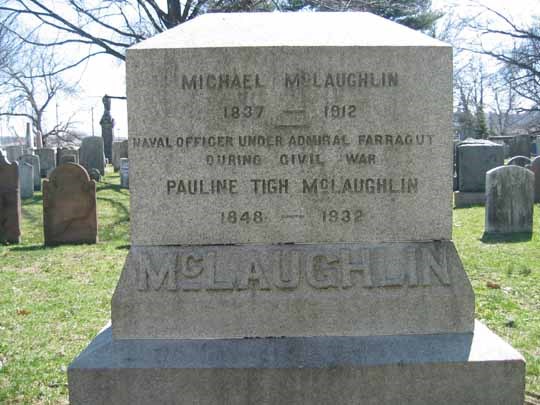Last updated: January 7, 2025
Article
The Long road of a Civil War sailor to St. Paul's Church

National Park Service
The Long Road of a Civil War sailor to St. Paul’s Church
The direction of Michael McLaughlin’s life was changed in several ways by his Civil War experience. Born in Ireland, McLaughlin immigrated to Massachusetts in the 1850s as a teenager. Like many immigrants in the nation’s seaboard cities, he obtained employment in ship yards and on the docks. Through these experiences, the young Bostonian developed practical skills which eventually made him a valuable mechanic for the Union navy.
Enlisting in April 1862, Assistant Engineer McLaughlin helped maintain the steam engine powering the recently launched, 803-ton U.S.S. Genesse, which patrolled the blockade line in the North Atlantic and the Gulf of Mexico under Admiral David Farragut. McLaughlin also operated in extreme heat below deck monitoring the engines when the 209-foot steamer participated in the pivotal 1863 siege of Vicksburg on the Mississippi River under General Ulysses S. Grant. In that campaign, the ship suffered severe damage and her crew sustained many casualties while attempting to maneuver past the Confederate batteries at Port Hudson, although McLaughlin survived.
Discharged in New York, McLaughlin remained in the nation’s largest city, which had a sizable Irish-American population. Maritime and engineering abilities expanded during the war helped the blue eyed veteran gain employment with the Ward Steamship line, earning respectable pay for the next several decades. In addition, remaining in New York created the circumstances that eventually led him to St. Paul’s Church.
He married a woman named Pauline Tigh. Their match was an unusual inter-religious, 19th century union: Michael was Catholic and Pauline was raised in the Protestant faith. Living in New York City by the late 1860s, Pauline had been raised in the St. Paul’s community and was baptized in the church. Oral tradition recalls that Pauline’s marriage outside the bounds of the Protestant religion created serious strains within her family.
Pauline and Michael Mclaughlin enjoyed a long marriage, raising their large family in Brooklyn. Despite the Tigh family rejection, and perhaps because of his immigrant roots, Michael digested a shared sense of Pauline’s heritage, characterized by assuming ownership of the Tigh family plot in the St. Paul’s cemetery. Three McLaughlin children who died young in the 1870s and 1880s were buried there.
When the navy veteran passed in 1912 at age 75, his widow purchased an additional cemetery space behind the church. Michael was memorialized through a large granite monument commemorating his wartime service, under Admiral Farragut. Pauline was buried beside him when she died 20 years later.
